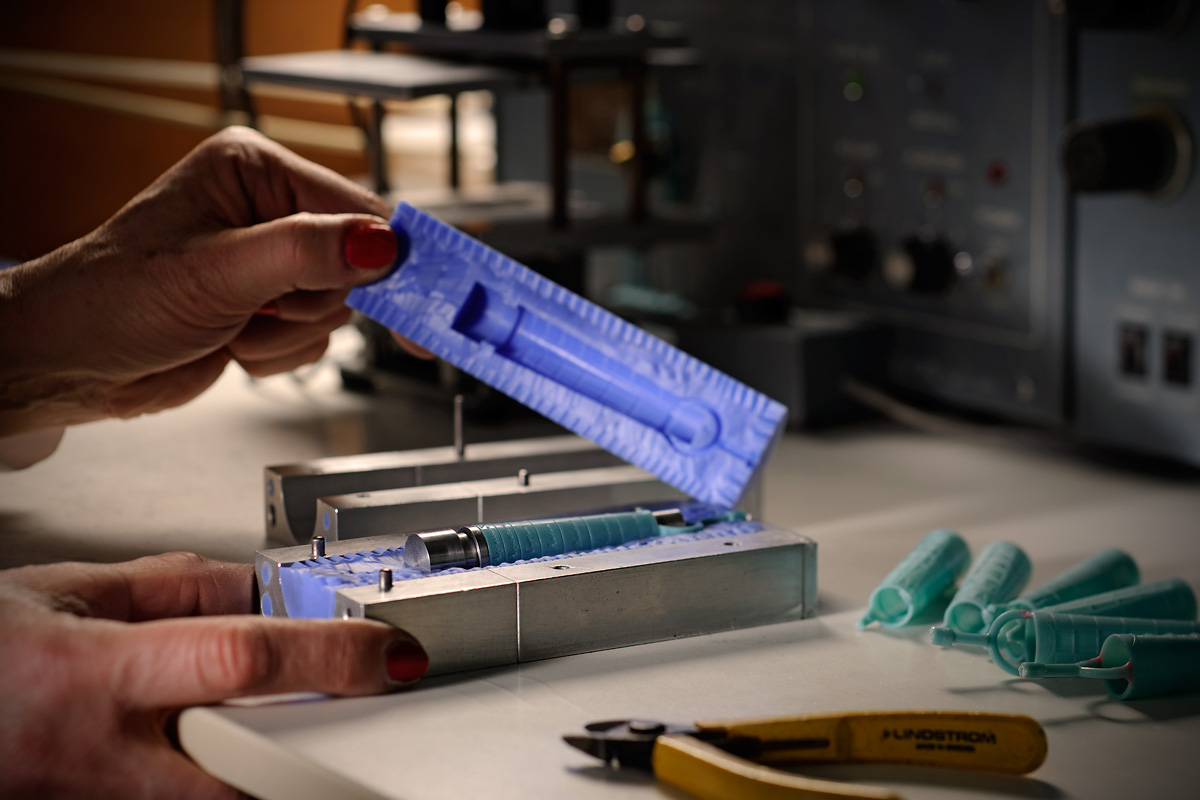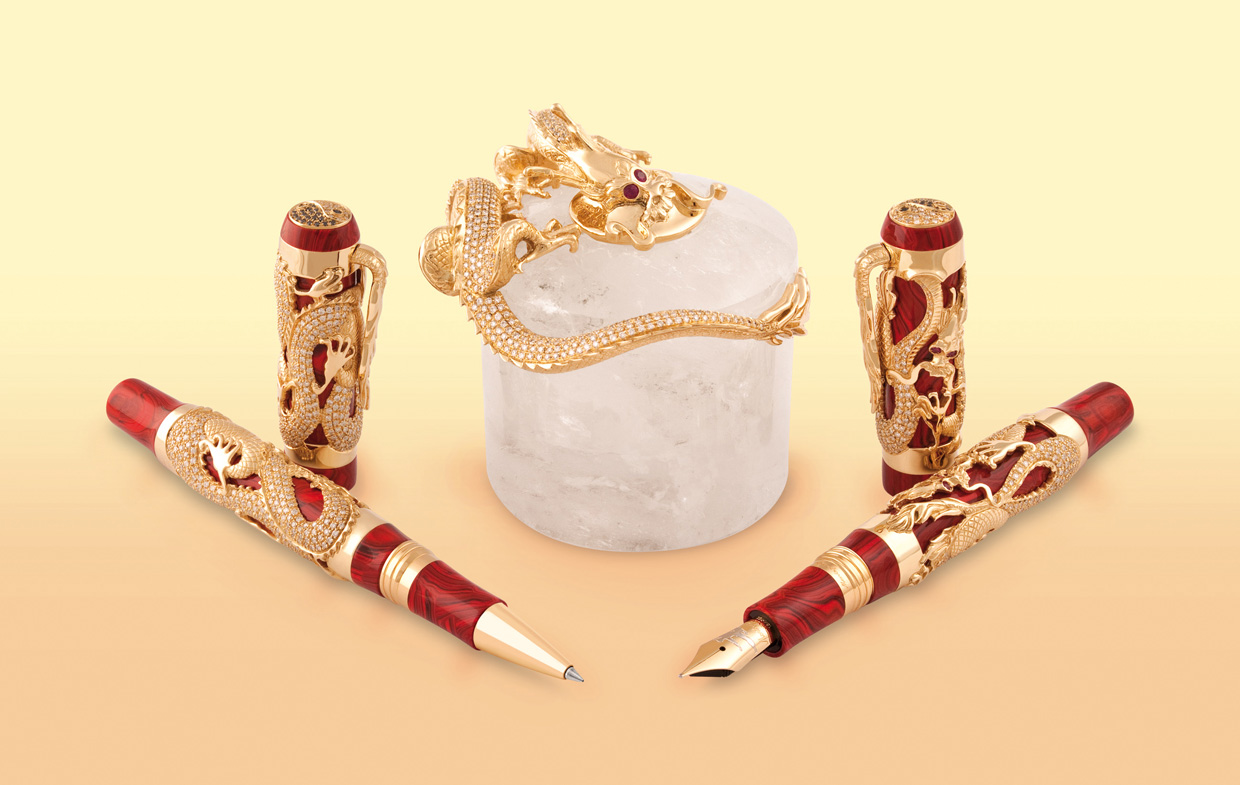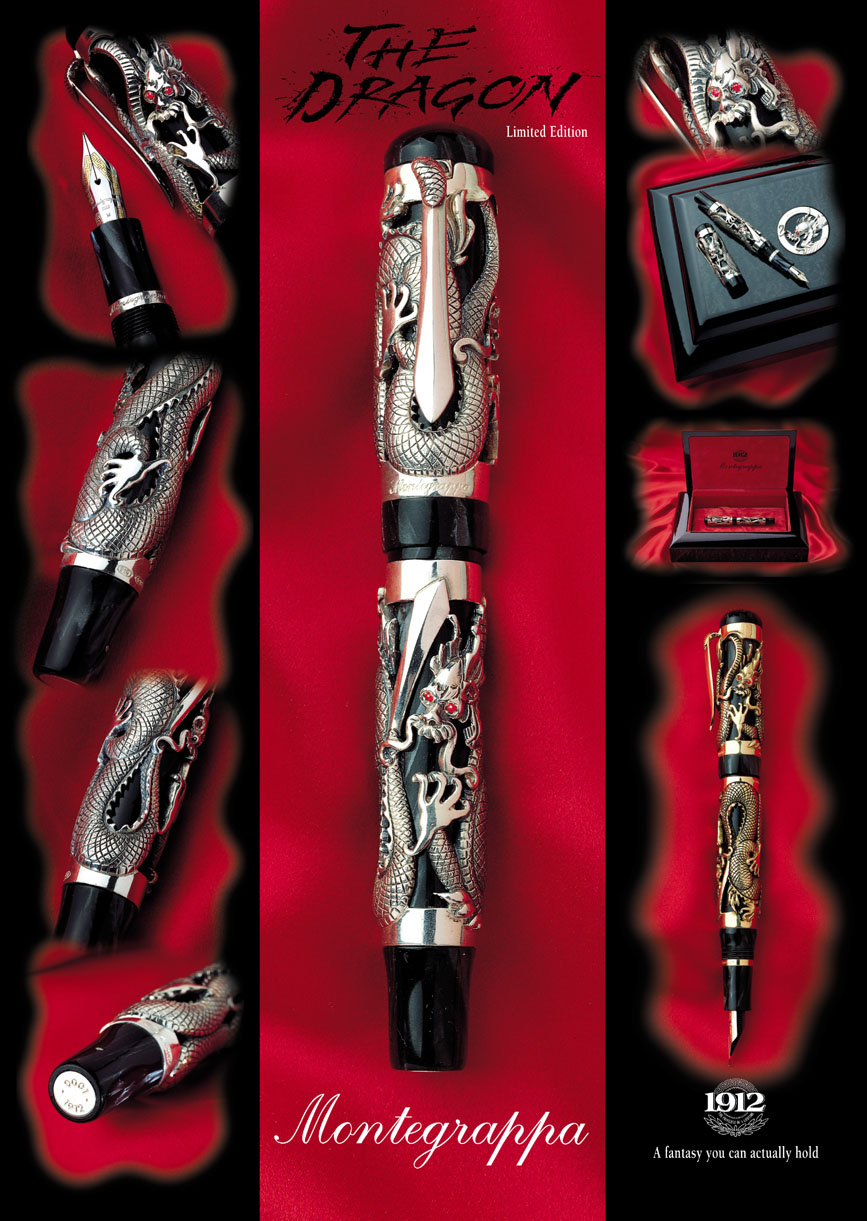25 YEARS OF THE DRAGON
Reunion with a cult classic

The global pandemic caused many celebrations to be postponed during 2020, with the silver jubilee of our most fêted creation among them.
As a turbulent year draws to a close, we joined Montegrappa CEO Giuseppe Aquila to look back on the birth and rise of the elusive Dragon.
“We decided that if celluloid was to make a comeback, it would need to be spectacular,” Giuseppe Aquila recalls, as he hustles us past the glittering vitrines dotted throughout Montegrappa’s private museum. “We couldn’t risk it going unnoticed,” he adds as he nears the case housing The Dragon. “There she is,” he remarks, looking on with a glint in his eye.
In 1993, Aquila was fresh out of university and eager to leave his mark on the family company. One year prior, the all-silver 80th Anniversary had been Montegrappa’s first public luxury release in decades. Curiosity in Italy’s first fountain pen maker was rebounding, and calls to revive the brand’s vintage codes were growing.
“In the thirties and forties, Montegrappa’s intriguing celluloid colours were hugely popular,” Aquila explains. “But the fire put an end to that.”

Although celluloid is a delight to the senses, curing and machining it is a precise and perilous science. “In 1946, it all went up in flames,” Aquila explains, pointing to the site of the accident. “Bringing celluloid back was much more than a choice,” he pauses. “It was a commitment.”
Chasing Glory
Modest successes with precious metals had made the company eager to use silver and gold to glorify the celluloid.
But ensuring both materials could realise their full potential would require skills that no-one in the pen industry possessed. A search for solutions began.“We visited local jewellery manufacturers, who showed us how detailed three-dimensional figures could be made at small scale using complex, handmade moulds.” Aquila’s interest had been piqued: the jeweller’s art of lost-wax casting offered thrilling possibilities. The idea to encase a celluloid pen within a precious metal frame was born.

For the idea to become a reality, many technical challenges lay ahead. The heft of a writing instrument demanded much larger pieces than those produced in typical jewellery ateliers. But there was also a creative dilemma to resolve. What should such an elaborate creation say? “We needed a motif that could envelop the entire pen, but leave space for the celluloid to shine through.”
The Idea
Milanese sculptor, Federico Monti, was enlisted into the project, and the design process began.
“We looked at several concepts with Federico, and soon arrived at the idea of an ancient dragon,” Aquila explains. Of all the figures that could be coiled around a writing instrument, a dragon offered the greatest scope for artistic expression. But the choice was also an emotional one: “Attributes like strength, ferocity and hidden knowledge seemed a perfect recipe for a power pen.”
Montegrappa’s far-eastern partners were brought on as project consultants to help Monti’s design meet local expectations, and local Chinese artists gave cultural insights. Meanwhile, a boutique casting studio in Bassano del Grappa was preparing to turn the team’s vision into a reality. Lost-wax casting had never before been used in the fabrication of pen elements.
When the first prototypes of Dragon emerged, the project had spent more than two years in development, and involved a complex network of collaborators on three continents. “This all took place before the advent of company email,” Aquila quips. “Honestly, it seems miraculous today that we managed to bring it all together.” But the product itself showed no signs of haste.
Enter the Dragon
Versions of sterling silver and 18K gold were paired with black, mother-of-pearl celluloid.
It was everything Aquila and his team had hoped for.
In the winter of 1995, Montegrappa headed to Frankfurt’s Paperworld exposition armed with a single production sample.
Pride and anticipation within the team were high, but tempered with anxiety: “We had costed the pen at ITL. 3,900,000 (approximately €2,000),” Aquila recalls.
“But, back then, the most expensive pens retailed at around ITL. 2,000,000.”
He was haunted by doubt: in his drive to achieve the ultimate celluloid pen, had he created an even bigger monster?
His worries were soon banished: interest in the daring creation was intense and Montegrappa was the talk of the show.
“The heads of all the big brands came to see what the fuss was about, and congratulate us on what we had achieved,” Aquila recounts.
Praise from dealers was just as effusive, with pre-orders causing the edition to sell out within a month of its public debut.
Turning Point
Though the Dragon had proven a tremendous commercial success, its influence on Montegrappa and the wider writing landscape was just as profound.
Its groundbreaking craftsmanship – and price tag – had broken a glass ceiling. Connoisseur and collector interest in new luxury pens had been kickstarted, causing many manufacturers to recalibrate their ambitions and pursue ever more elaborate, outlandish designs.
For Montegrappa, the Dragon’s impact is impossible to overstate. Over the ensuing 25 years, celluloid and lost-wax casting would become signature elements of many of the company’s most extraordinary designs, while variants of the silhouette would reappear in 2005 – with the ultra-limited 10th Anniversary edition – and again in 2010 to mark the 70th birthday of Bruce Lee.

Meanwhile, the silhouette’s cult appeal helped Montegrappa achieve some of its most notorious milestones. On 31 December 1999, Boris Yeltsin signed over power to Vladimir Putin using a Dragon: a piece that remains in the possession of the Yeltsin family. Similarly, the company’s long-term friendship with Sylvester Stallone also traces back to the Dragon, as Aquila recalls.
“Stallone’s management reached out to us,” he remembers. “Apparently he had lost his own Dragon and was desperately looking for a replacement to sign a deal.” Knowing that the edition had long since sold out, Aquila offered them a rare example from the company’s cache of artist proofs. The offer was accepted, precipitating a relationship that would culminate in 2011’s blockbuster Chaos collaboration. Fittingly, this landmark design also relied on celluloid encased in precious metals.

Twenty-five years after the Dragon’s launch, the world has changed – not least in the writing sphere, where formidable new competitors have seen pens embrace their potential not just as tools, but as trophies. Looking back, the Dragon’s blatant disregard for practical conventions seems remarkably prescient. Perhaps the mythical creature’s hidden knowledge was the biggest clue all along.
Since the Dragon’s unprecedented assault on luxury’s norms, Montegrappa’s archive of Limited Editions has swollen to encompass more than 150 enchanting handcrafted designs. Visit our Vault section to discover – or rediscover – them all.

Save your items
Save your favourite items


